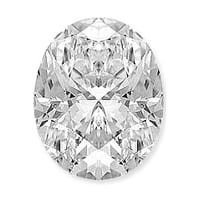“Should I Buy a Lab-Grown Diamond?”
The following includes a blue colored link which leads to amazon and I will receive a commision if you purchase from there, thank you!
If you’re in the market for a diamond engagement ring, you may be wondering if you should consider a lab-grown diamond instead of a traditional mined diamond. Lab-grown diamonds have been gaining in popularity in recent years, and for good reason. They offer many of the same benefits as mined diamonds, but with some added advantages. In this post, we’ll explore the pros and cons of lab-grown diamonds and help you decide if they’re the right choice for you.
click to buy a quality diamond tester
First, let’s start with the basics. Lab-grown diamonds are created in a laboratory using advanced technology such as HPHT process and CVD processed diamonds. Which one is right for you? They both replicate the natural diamond-growing process. They have the same physical and chemical properties as mined diamonds and are visually identical. In fact, even trained gemologists can’t tell the difference between a lab-grown diamond and a mined diamond without specialized equipment.
One of the main advantages of lab-grown diamonds is their cost. They typically cost 20-30% less than mined diamonds of similar quality, making them an attractive option for those on a budget. Additionally, lab-grown diamonds are more environmentally friendly than mined diamonds. The diamond mining industry has a significant impact on the environment, with the potential to cause soil erosion, water pollution, and other environmental damage. In contrast, lab-grown diamonds have a much smaller environmental footprint.
Another benefit of lab-grown diamonds is that they’re free from the ethical concerns associated with mined diamonds. Lab Grown Diamonds also need minerals mined from the earth and use a great deal of energy, so it’s a trade off. The diamond industry has a history of human rights abuses, including forced labor and child labor. Although many mines have taken steps to address these issues, it can be difficult to determine the origin of a mined diamond and ensure that it was ethically sourced. Lab-grown diamonds, on the other hand, are created in a controlled environment and are not associated with any human rights concerns.
However, there are also some potential drawbacks to consider. One of the main concerns is that lab-grown diamonds may not hold their value as well as mined diamonds. While the technology for creating lab-grown diamonds is constantly improving, they are still a relatively new product on the market. This means that their long-term value is somewhat uncertain. Additionally, some people may simply prefer the romantic notion of a “real” diamond that was formed deep beneath the earth’s surface over a diamond that was created in a laboratory.
Another potential downside is that lab-grown diamonds may not be as rare as mined diamonds, which can impact their perceived value. The scarcity of mined diamonds is one of the factors that makes them so valuable. While lab-grown diamonds are still relatively rare compared to other gemstones, they’re not as rare as mined diamonds.
Ultimately, the decision to purchase a lab-grown diamond is a personal one that depends on your individual preferences and values. If cost, environmental impact, and ethical concerns are important factors for you, a lab-grown diamond may be the right choice. On the other hand, if you’re looking for a traditional, “real” diamond with a long history of value and symbolism, a mined diamond may be a better fit.
Regardless of which option you choose, it’s important to do your research and purchase from a reputable dealer. Look for companies that are transparent about their diamond sources and can provide certification to ensure that your diamond is of high quality and ethically sourced. With careful consideration and research, you can find the perfect diamond to symbolize your love and commitment.

